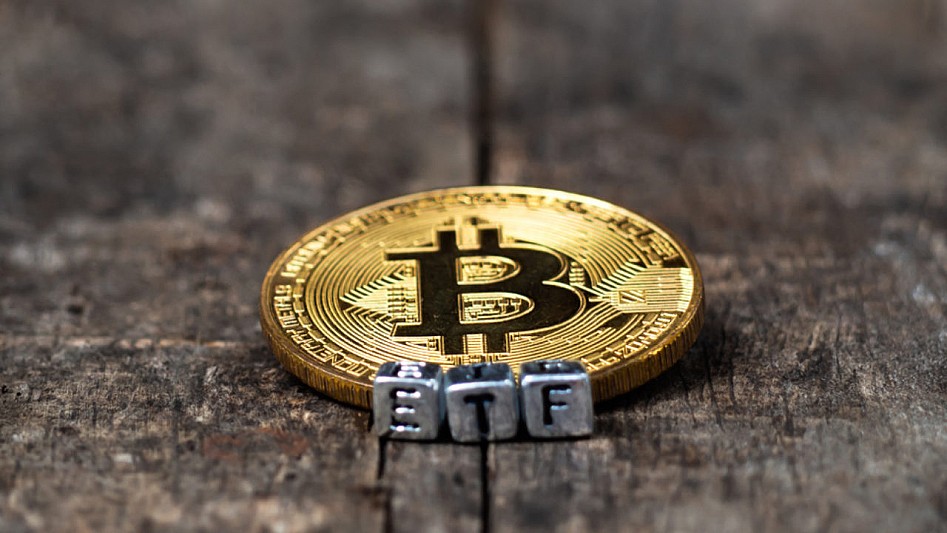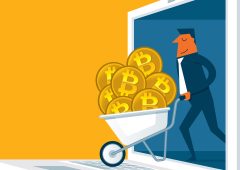Bitcoin ETF Trading Hits Record Levels as Price Approaches All-Time High
30.10.2024 15:00 1 min. read Alexander Zdravkov
On October 29, BlackRock's Bitcoin ETF (IBIT) posted a record-breaking daily trading volume, reaching $3.35 billion—its highest in over six months.
This surge aligned with Bitcoin’s climb to approximately $72,390, bringing it within 2% of its all-time high. According to Bloomberg ETF analyst Eric Balchunas, the spike may indicate a surge of “FOMO” buying among investors eager to capture potential gains.
Balchunas reported that BlackRock’s ETF alone saw close to $600 million in inflows that day, while across all spot Bitcoin ETFs in the U.S., daily inflows reached $827 million, per CoinGlass data. Balchunas speculated that this surge could either signify heightened interest from speculative buyers or increased arbitrage trading, adding, “If this FOMO-driven buying continues, we’ll see more inflows over the next few days.”
Galaxy Digital’s head of research, Alex Thorn, pointed out that October 29 marked the third-highest trading day for Bitcoin ETFs since April 2024, with total volume across U.S. spot Bitcoin ETFs reaching a combined $4.64 billion. Grayscale Bitcoin Trust followed BlackRock’s ETF as the second-highest, with $390 million in inflows.
While the elevated trading volume suggests strong liquidity, it doesn’t necessarily reflect an influx of fresh capital. However, IBIT has enjoyed steady inflows for 12 straight days, amassing about $3.2 billion in that period, based on Farside data.
-
1
Trump-Linked Truth Social Pushes for Bitcoin-Ethereum ETF as Crypto Strategy Expands
25.06.2025 19:00 2 min. read -
2
Bitcoin Hashrate Declines 3.5%, But Miners Hold Firm Amid Market Weakness
27.06.2025 21:00 2 min. read -
3
Bitcoin’s Price Closely Mirrors ETF Inflows, Not Corporate Buys
26.06.2025 11:00 2 min. read -
4
Crypto Company Abandons Bitcoin Mining to Focus Entirely on Ethereum Staking
26.06.2025 20:00 1 min. read -
5
Bitcoin ETF Inflows Hit $2.2B as Market Calms After Ceasefire
25.06.2025 17:00 1 min. read
Peter Schiff Warns of Dollar Collapse, Questions Bitcoin Scarcity Model
Gold advocate Peter Schiff issued a stark warning on monetary policy and sparked fresh debate about Bitcoin’s perceived scarcity. In a pair of high-profile posts on July 12, Schiff criticized the current Fed rate stance and challenged the logic behind Bitcoin’s 21 million supply cap.
Bitcoin Price Hits Record Highs as Exchange Balances Plunge
A sharp divergence has emerged between Bitcoin’s exchange balances and its surging market price—signaling renewed long-term accumulation and supply tightening.
What’s The Real Reason Behind Bitcoin’s Surge? Analyst Company Explains
Bitcoin touched a new all-time high of $118,000, but what truly fueled the rally?
Bitcoin Lesson From Robert Kiyosaki: Buy Now, Wait for Fear
Robert Kiyosaki, author of Rich Dad Poor Dad, has revealed he bought more Bitcoin at $110,000 and is now positioning himself for what macro investor Raoul Pal calls the “Banana Zone” — the parabolic phase of the market cycle when FOMO takes over.
-
1
Trump-Linked Truth Social Pushes for Bitcoin-Ethereum ETF as Crypto Strategy Expands
25.06.2025 19:00 2 min. read -
2
Bitcoin Hashrate Declines 3.5%, But Miners Hold Firm Amid Market Weakness
27.06.2025 21:00 2 min. read -
3
Bitcoin’s Price Closely Mirrors ETF Inflows, Not Corporate Buys
26.06.2025 11:00 2 min. read -
4
Crypto Company Abandons Bitcoin Mining to Focus Entirely on Ethereum Staking
26.06.2025 20:00 1 min. read -
5
Bitcoin ETF Inflows Hit $2.2B as Market Calms After Ceasefire
25.06.2025 17:00 1 min. read


